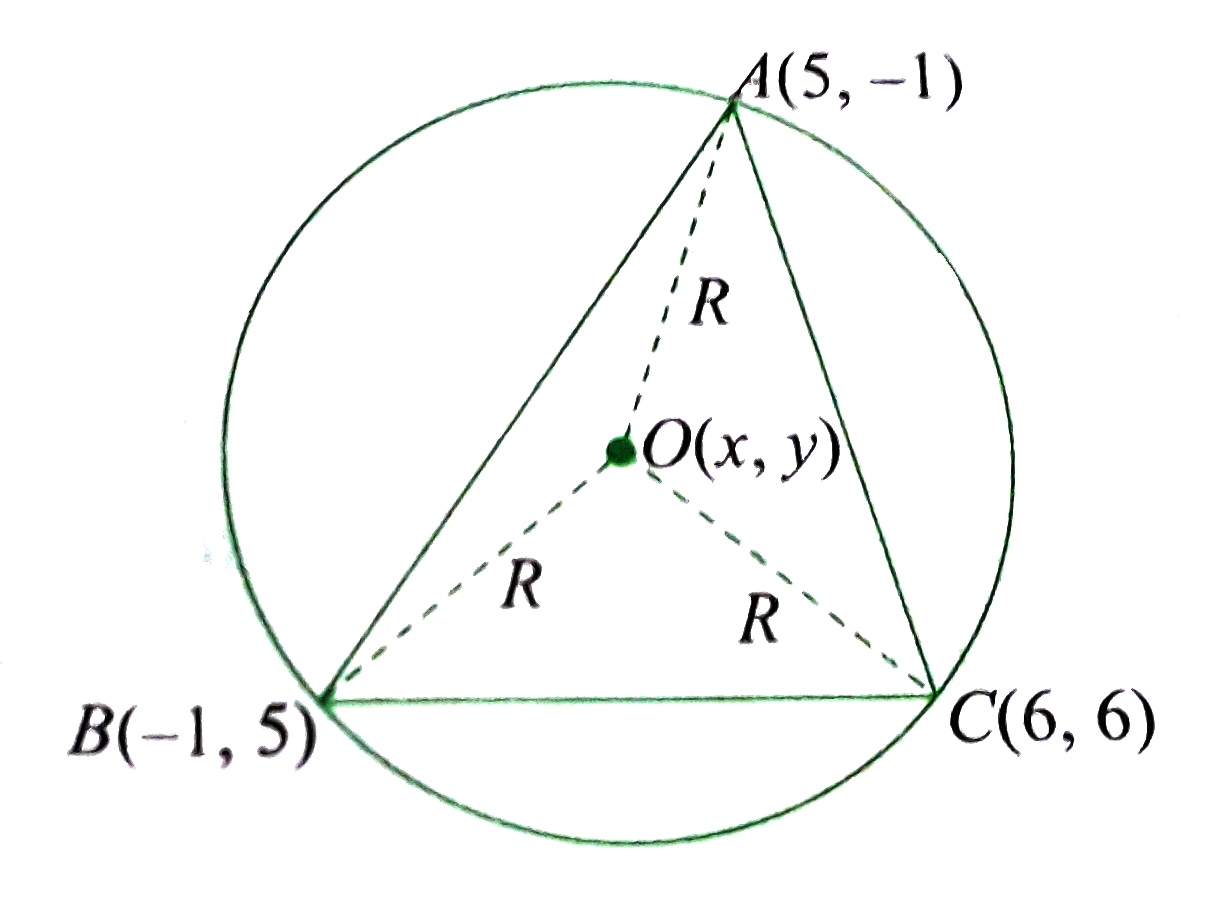Find the coordinates of the circumcenter of the triangle whose vertices are (A(5,−1),B(−1,5), and C(6,6). Find its radius also.

Let the circumcenter be O(x,y). Then
(OA)2=(OB)2=(OC)2=(Radius)2=R2 (1)
or (x−5)2+(y+1)2=(x+1)2+(y−5)2
=(x−6)2+(y−6)2
Taking first two relations, we get
(x−5)2+(y+1)2=(x+1)2+(y−5)2
or x=y (2)
Taking last two relations, we get
(x+1)2+(y−5)2=(x−6)2+(y−6)2
or (x+1)2+(x−5)2=(x−6)2+(x−6)2 [From (2)]
or 2x28x+26=2x−24x+72
or x=238
or Circumcenter ≡(23/8,23/8)
or R2=(x−5)2+(y+1)2=(OA)2
=[238−5]2+[238+1]2
=17264+31264=125064
or Radius =25√28units.
Topper's Solved these Questions
- COORDINATE SYSYEM Book:CENGAGEChapter:COORDINATE SYSYEM Exercise:Exercise 1.1
Explore 6 Videos
- COORDINATE SYSYEM Book:CENGAGEChapter:COORDINATE SYSYEM Exercise:Exercise 1.2
Explore 8 Videos
- COORDINATE SYSTEMBook:CENGAGEChapter:COORDINATE SYSTEMExercise:Multiple Correct Answers Type
Explore 2 Videos
- CROSS PRODUCTS Book:CENGAGEChapter:CROSS PRODUCTS Exercise:DPP 2.2
Explore 13 Videos
Similar Questions
Knowledge Check
The coordinates of the circumcentre of triangle whose vertices are A(5, -1), B(-1,5) and C(6,6) are
A(238,−238)B(238,238)C(5, 6)DNone of theseFind the area of the triangle, whose vertices are (2,1), (4,5) and (6,3).
A3B6C9D12
Find the co-ordinates of the circumcentre of a triangle whose vertices are (7,5), (6,6) and (−2,2).
View SolutionFind the coordinates of the circumcentre of the triangle whose vertices are (3, 0), (−1, −6) and (4, −1) . Also, find its circumradius.
View SolutionFind the co- ordinates of the circumcenter of the triangle whose vertices are (3, 7) , (0, 6) and (-1, 5) . Find the circumradius.
View SolutionFind the coordinates of the circumcentre of the triangle whose vertices are (6,6),(8,−2) and (2,2) Also, find its circum-radius.
View SolutionFind the coordinates of the circumcentre of the triangle whose vertices are (8,6),(8−2) and (2,−2) Also, find its circum-radius.
View SolutionWhat are the coordinates of the centroid of a triangle, whose vertices are A(1,-5), B(4,0) and C(-2,2)?
View Solution
